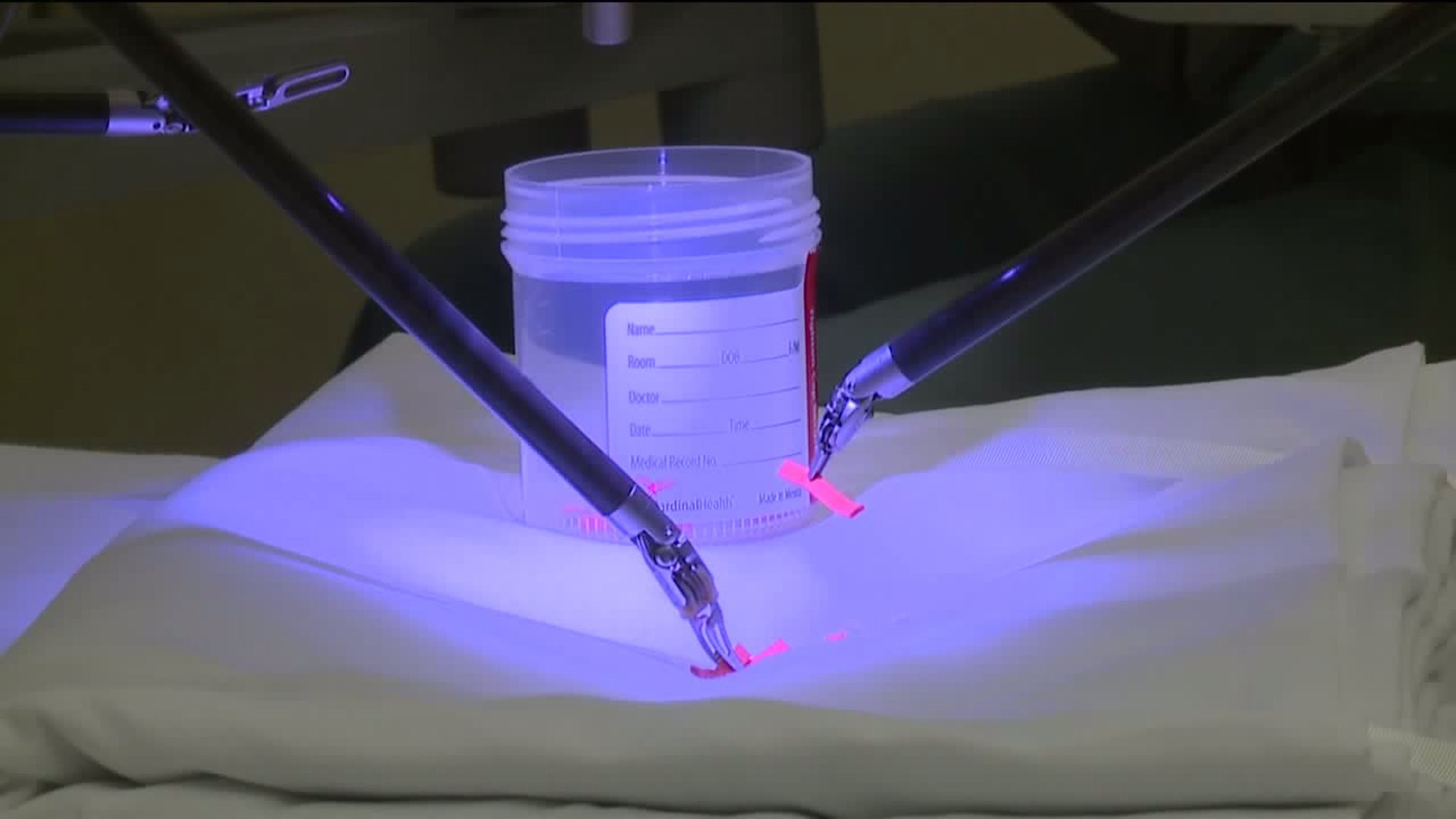WILLIAMSPORT, Pa. -- If you had to have surgery 20 years ago, it would typically be with a big, open incision and a fair amount of risk, according to a doctor at UPMC Susquehanna in Williamsport, who invited us to take a tour of what's becoming more the norm: robotic surgery.
Step inside the operating room at UPMC Susquehanna in Williamsport for a close look at some of the hospital system's robotic surgery offerings.
"It's no longer the future of medicine. it's really the present," said Dr. Christopher Reilly.
Dr. Reilly is a urologist and medical director of robotic surgery. He says the invention of laparoscopic surgery years ago, a minimally invasive option, paved the way for the better tools of robotic surgery tools like the ones he's setting up here, which he says offers more precision, better magnification, and 3D vision.
"It's the same thing if you have a carpenter using an electric drill, versus someone with a hand drill. There is still somebody using the instrument, but they're able to do more with it than they could with an older tool," said Dr. Reilly.
Dr. Reilly showed us just how precise the tools are. He's operating them from just next to the bed, and demonstrated the fine movement needed for stitches. He says all of this makes for a better experience for the patient.
"Patients who used to be in the hospital for several days for pain control, problems from bleeding, recovering from belly manipulation, most of them are going home the next day."
Down the hall, neurosurgeon Dr. Rodwan Rajjoub showed us the robotic tools he uses during surgery.
"This tool, I can put it on the brain or on the skull, and I'm able to identify where I am on that monitor," said Dr. Rajjoub.
Dr. Rajjoub says when he started 45 years ago, he had no CAT scans or MRIs to use. Now there are scans right in the operating room, allowing him to localize a spot in the brain like never before, using views from all angles.
"We're able to do the scan to make sure the tumor has been removed, no blood clot remains, and the patient is in good health."
Both doctors at UPMC Susquehanna say what robotic surgery means, in any case, is less time in the hospital, and better outcomes all around.

